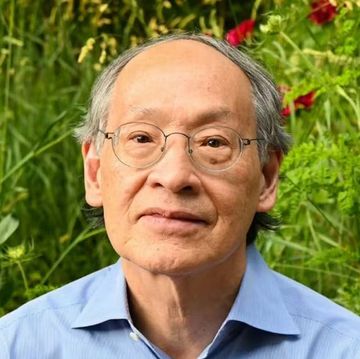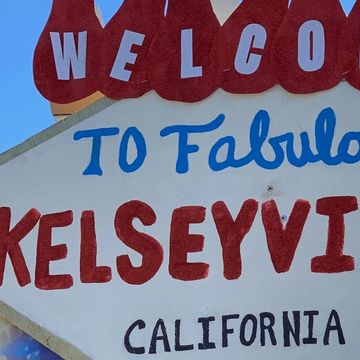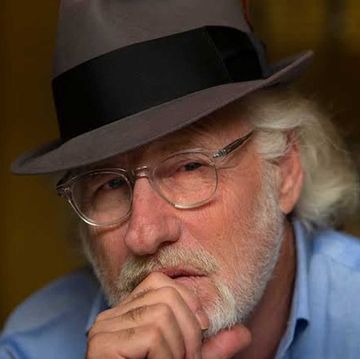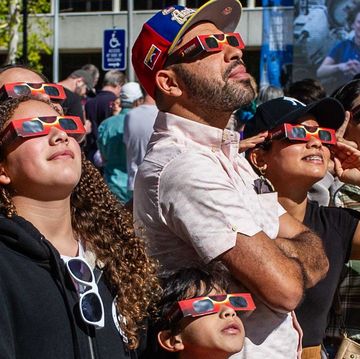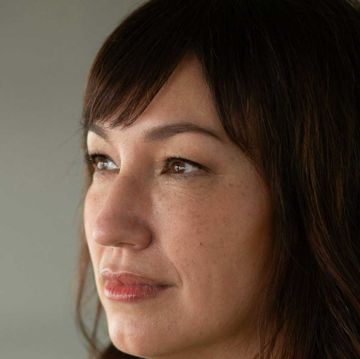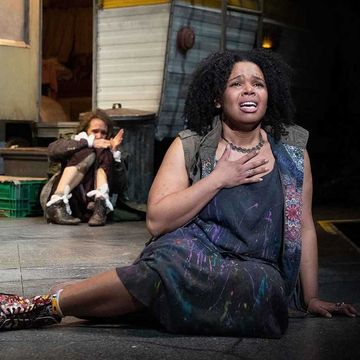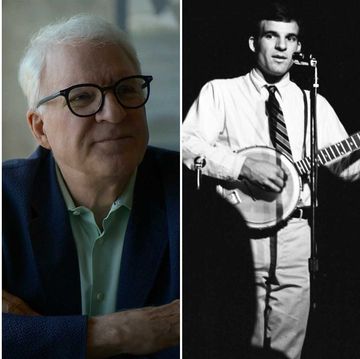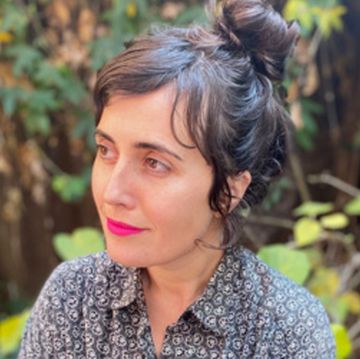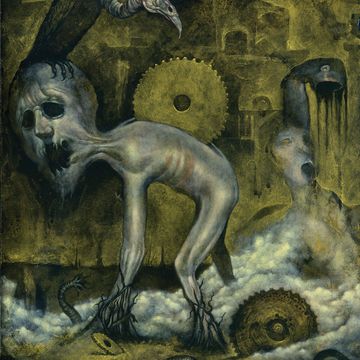It’s not surprising that Muzae Sesay played with Legos as a child. In his studio, his paintings that cover the walls reveal geometric worlds similar to those created by the attachable building blocks. The brightly colored organization matches too: green and violet spray paint cans line shelves beneath acrylics and boxes of colored pencils. Stacked books form neat towers across from a tangerine filing cabinet. The only wild elements are bending monstera plants, thick gobs of dried purple paint spilling from a corner piled with jars and brushes, and a rogue skateboard.
Sesay’s latest works take on architectural forms, and they represent something bigger than the plastic blocks Sesay used to play with: Oakland, the California city he’s called home since 2017.
This article appears in Issue 26 of Alta Journal.
SUBSCRIBE
His art adorns the city and the greater Bay Area. A 100-by-150-foot mural, Lake Merritt, Black Structures and Colorful Streets, painted high on the side of an office building, towers over Oakland’s Telegraph Avenue and 19th Street. Its 2-D black-and-white stairways and arches, punctuated by pops of red and green, have meshed with the cityscape since 2021. Sesay’s vivid geometry—pink arches, blue half-moons, quadrilaterals of all colors—covers basketball courts in East Oakland and the outside of the St. Vincent de Paul Society headquarters in San Francisco, a center for domestic violence survivors.
The colorful world of these murals contrasts dramatically with the Orange County neighborhood where Sesay grew up. There, residents were restricted by city ordinance to a sterile suburban color palette for painting their houses; putting up “extravagant Christmas decorations,” he says, was not allowed. “There were, like, five house designs.”
The houses weren’t the only thing lacking diversity.
“When we were in Southern California, I was kind of the token Black artist,” he says. “I had my dreadlocks, was doing art stuff—was, like, not typical.”
A 2011 move to San Francisco, teeming with imaginative people (and colorful houses), brought him one step closer to Oakland. “Everyone was creating for the sake of creating,” Sesay says. He studied sociology at San Francisco State—which was essentially art school in the eyes of his Sierra Leonean immigrant father, who would have preferred he choose something more career focused. But art school never appealed to Sesay. He didn’t want whatever he might have learned there to taint his style, which he’d begun honing as a child. And frankly, to him, that route reeked of capitalism. “I had no outside art-world ambitions, really,” he says. “I was just concerned with my immediate community.”
In San Francisco, Sesay started assembling a ragtag group of art enthusiasts. At first, he just wanted to meet people he could “build with” while working at a record shop to make rent. But then he landed an art handler job at the San Francisco Museum of Modern Art, installing, moving, and packing pieces for its exhibitions. Around early 2016, he met another non–art school graduate breaking into the art world: Brock Brake. Roughly two years after they met, Brake opened a gallery in Oakland called Pt.2; its inaugural show was Sesay’s first solo show.
As much as San Francisco provided Sesay, Oakland offered something more enticing. “The things that brought me to San Francisco—similar things brought me to Oakland, but Black,” he says.
Never had Sesay, now 34, been immersed in such a diverse crew of “Black and brown people coming together to build a thriving and very loving, compassionate arts community that’s also more like a support group.” As a core member of that circle, he has curated guest exhibitions in what would have otherwise been his solo shows, to give other artists the opportunity to display their work; volunteered to moderate artists’ panels; and hired young artists to help out in his studio. His love for the Oakland he and his friends inhabit together is overflowing. One of his recent exhibitions, When We Were Here Last (2023), was a rumination on the establishments they frequented before the pandemic lockdown. It highlighted beloved gathering spots, from the Legionnaire Saloon and the Ruby Room to the Chinese restaurant Shandong.
But Sesay’s work isn’t exclusively laudatory—it presents a complex and critical view of his adoptive city. One seemingly innocuous painting of an overpass, Goodnight West Oakland, Love 980, is named for an interstate that was built over two decades starting in 1962 and has a “dark history of being this tool for redlining,” Sesay explains, as it cut off a once-booming, predominantly Black neighborhood from the downtown commerce area.
Sesay is dedicated to reviving a thriving Oakland. When the roughly 40-year-old Rainbow Recreation Center, one of the only public gyms in East Oakland, underwent a big renovation in 2019, the nonprofit Project Backboard and 2K Foundations, a charitable program of the video game publisher that puts out NBA 2K, partnered with Sesay to refresh the basketball courts.
You can see him at work in a video of the project produced by 2K Foundations: on a sunny summer day, wearing black from beanie to sneakers, Sesay rolls aquamarine paint onto one of many colorful rectangles he’s laid out on one of the courts, surrounded by community members with rollers in hand. He was still painting, he recalls, when local kids began lining up to jump from color to color. “We literally couldn’t stop them from going onto the court anymore,” Sesay says. He designed the courts to facilitate both regulation basketball and whimsical games of players’ own inventions.
“We got more people coming over here now,” Rainbow Recreation Center director Horace Houston says in the video. The courts are one of the city’s new developments, he adds, that are “making people proud to be an Oaklander.” The mural has become such a landmark that Warner Bros. allegedly nodded to it in the studio’s 2021 movie Space Jam: A New Legacy. (A little too pointedly: Sesay says he later collected a settlement.)
Despite the recognition, Sesay’s art still surprises people. “There’s an expectation, especially around Black art, to represent what white people think Black art is,” he says, which often ends up looking like white collectors accumulating and fetishizing works that depict Black bodies. Sesay wants to “relish in the idea that Black art is all art and could be anything.”
He’s waiting for the conversations that don’t put Black artists’ work in a box, and he’s fostering grassroots spaces. That includes Pt.2, now an Oakland staple, where established art professionals come for Sesay and stay to discover up-and-coming talent. “It was pretty fulfilling to be bringing in SFMOMA curatorial eyes to all my friends and community,” Sesay says.•
Jessica Klein is a freelance journalist whose work has appeared in the Atlantic, the New York Times, and the Guardian. She is currently a contributing reporter at the Fuller Project, a nonprofit newsroom dedicated to reporting on issues that affect women.




